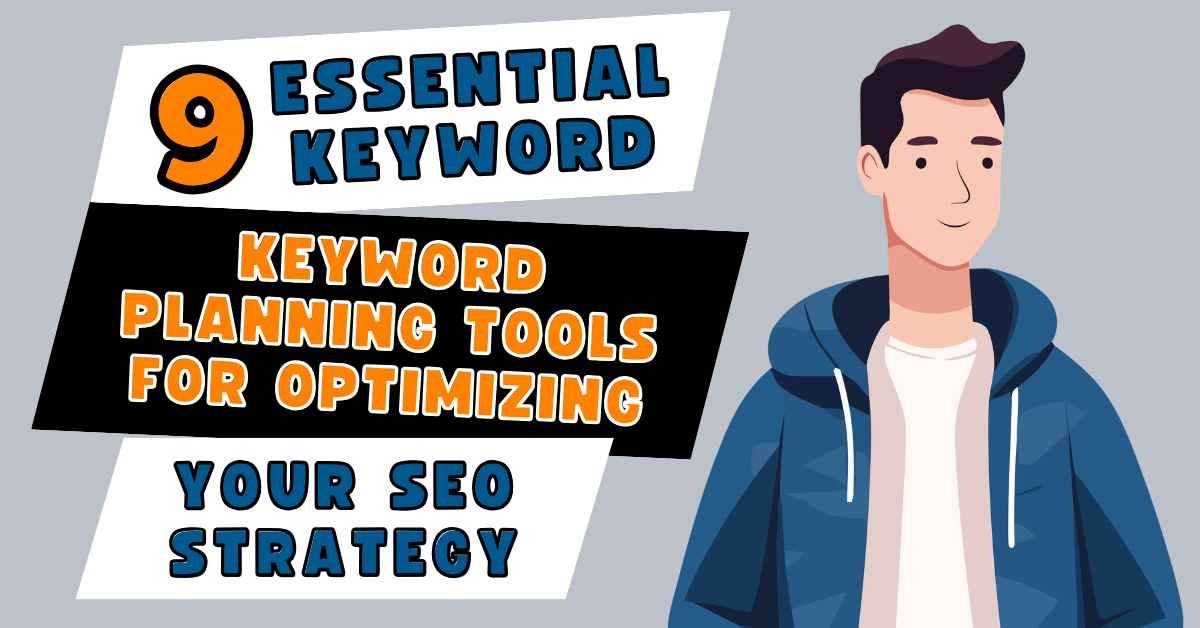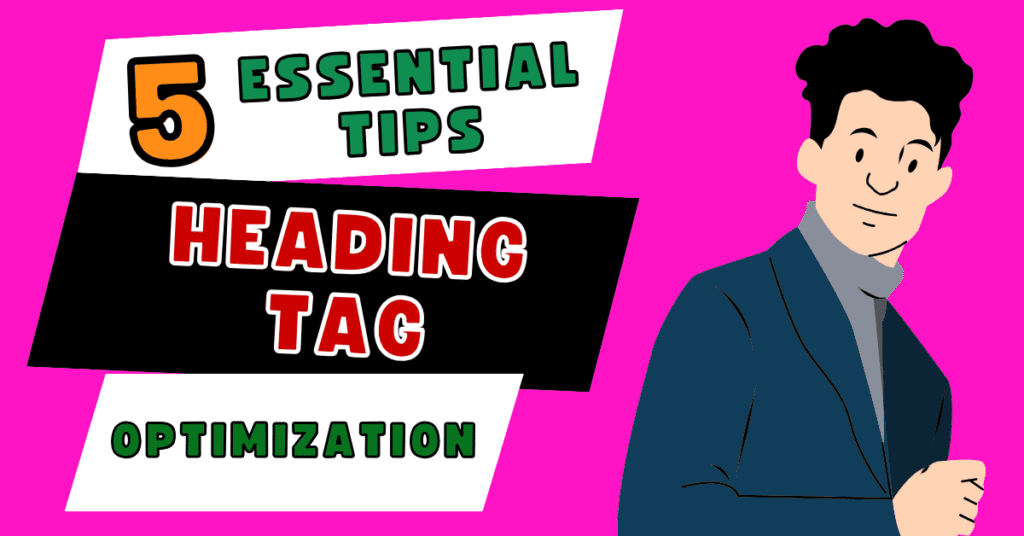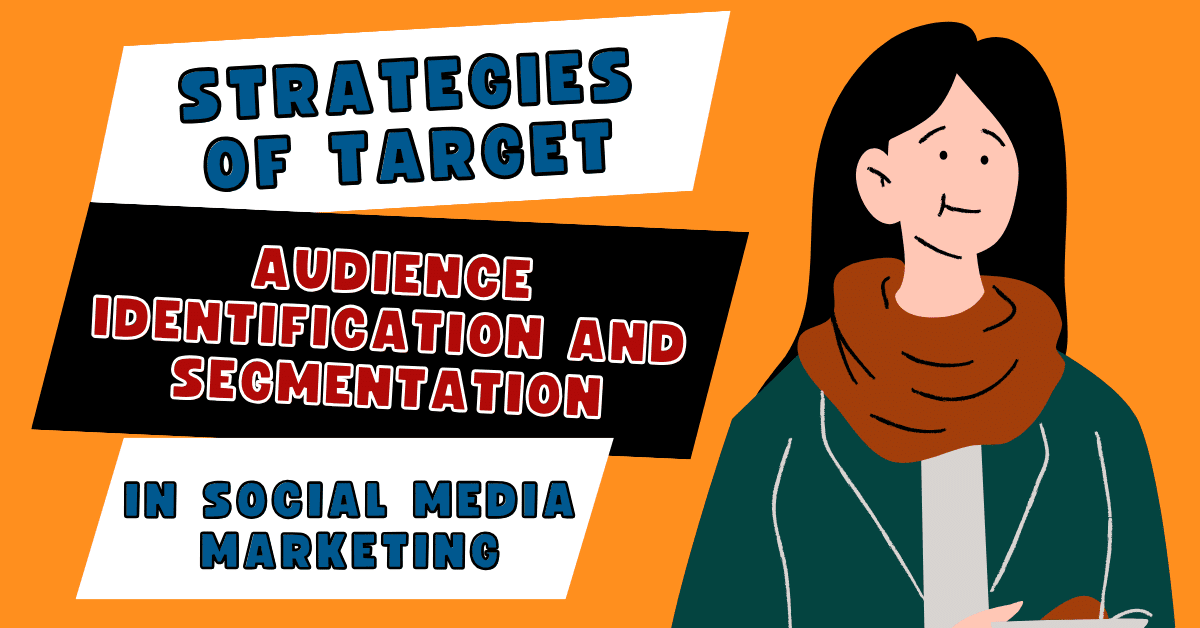
5 Essential Tips for Heading Tag Optimization: Boost Your SEO with H1, H2, and More!
- DCampaign Marketing
- Digital Marketing

Why heading tags are important in SEO?
Heading tags (H1, H2, etc.) play a important role in SEO by providing structure and provide shape to web content. Search engines use heading tags to understand the organization and relevance of content, aiding in indexing and ranking. Properly optimized heading tags not only improve SEO but also enhance user experience by making content more readable and visible.
How heading tags contribute to website structure and user experience
Heading tags uses for the website structure by organizing content systematically, guiding both users and search engines through the page’s main topics. They create visual breaks, aiding readability and making it easier for visitors to scan and understand the content quickly. Well-structured heading tags enhance user experience by improving navigation, guiding users to relevant sections, and creating a more easy and visual browsing experience.
Explanation of what heading tags are (H1, H2, etc.)
- Heading tags (e.g., H1, H2, H3) are HTML elements used to structure content systematically on webpages.
- They indicate the importance of different sections, with H1 typically denoting the main heading and H2, H3, etc., representing subheadings of decreasing importance.
- Heading tags provide visual cues to users, helping them understand the organization of content and navigate through the page.
- Search engines use heading tags to interpret the structure and relevance of content, influencing how pages are indexed and ranked in search results.
- Proper use of heading tags improves both SEO performance and user experience by making content more scannable, readable, and organized.
Why search engines value heading tags for indexing and ranking?
Search engines value heading tags for indexing and ranking because they provide important information about the structure and topic system of a webpage. Heading tags signal the main topics and subtopics, allowing search engines to understand the content’s relevance to user queries more accurately. Additionally, properly optimized heading tags contribute to better user experience by making content more readable and organized, which indirectly impacts SEO performance.
Impact of heading tags on user experience and readability
Heading tags improve user experience and readability by visually breaking up content, making it easier to scan and navigate. They also provide clear cues about the hierarchy of information, helping users quickly locate relevant sections.
Importance of keyword research for heading tag optimization
- Keyword research helps identify the most relevant and frequently searched terms related to the content.
- Incorporating these keywords into heading tags increases the likelihood of matching user queries and improving search engine visibility.
- Strategic use of keywords in heading tags enhances semantic relevance, aiding search engines in understanding the context and topic of the content.
- Proper keyword optimization in heading tags contributes to higher click-through rates and improved user engagement with the content.
Tips for selecting relevant keywords for each heading tag
- Understand Intent: Analyze user intent behind each section to select keywords that align with the content’s purpose.
- Use Long-tail Keywords: Incorporate specific, long-tail keywords that reflect the topic and address potential user queries.
- Consider Search Volume and Competition: Prioritize keywords with moderate to high search volume and manageable competition for better visibility.
- Utilize Keyword Research Tools: Use tools like Google Keyword Planner, SEMrush, or Ahrefs to identify relevant keywords and assess their performance metrics.
1. Optimize H1 Tags for Maximum Impact
The H1 tag holds significant importance for SEO as it represents the main heading of a webpage, signalling its primary topic to both users and search engines. Search engine algorithms often give more weight to content within H1 tags, considering it as a key indicator of the page’s subject matter. Properly optimized H1 tags with relevant keywords can positively impact a webpage’s ranking in search results, making it essential for SEO strategies aiming to enhance visibility and organic traffic.
Also Read: All you need to know about Title Tag
Best practices for crafting H1 tags, including length and placement
- Conciseness: Keep the H1 tag clear and concise, ideally within 20-70 characters, to ensure it accurately reflects the page’s main topic while maintaining readability.
- Keyword Optimization: Incorporate primary keywords naturally into the H1 tag to signal relevance to search engines and improve the page’s ranking for related queries.
- Unique and Descriptive: Craft unique and descriptive H1 tags that accurately summarize the content of the page, providing users with a clear understanding of what to expect.
- Early Placement: Place the H1 tag near the beginning of the page’s HTML structure to ensure search engines quickly recognize and prioritize the main topic, enhancing SEO effectiveness.
How to incorporate primary keywords into H1 tags effectively
- Natural Integration: Seamlessly integrate primary keywords into the H1 tag, ensuring they flow naturally within the context of the heading.
- Relevance: Prioritize relevance by selecting primary keywords that accurately represent the main topic of the page and align with user search intent.
- Avoid Keyword Stuffing: Maintain readability and user experience by avoiding excessive repetition of keywords in the H1 tag, focusing instead on creating a compelling and informative heading.
2. Role of H2 tags for content and readability
H2 tags play a important role in organizing content by placing it into distinct sections or subsections, providing a clear system within the page. They improve readability by breaking down the content into manageable chunks, making it easier for users to scan and navigate. Additionally, H2 tags serve as visual cues that guide readers through the structure of the content, enhancing overall comprehension and user experience.
Strategies for optimizing H2 tags for SEO
- Keyword Placement: Include relevant keywords naturally in H2 tags to signal the topic of subsections to search engines.
- Hierarchy Maintenance: Ensure H2 tags reflect the hierarchical structure of the content, with each tag representing a distinct subtopic or section.
- Descriptive and Engaging: Craft compelling H2 headings that accurately summarize the content of the subsection while enticing users to continue reading.
- Consistency: Maintain consistency in formatting and styling of H2 tags across the website to establish a uniform user experience and aid search engine crawlers in understanding the content structure.
Examples of effective use of H2 tags in content
- Subsection Summaries: Use H2 tags to introduce subsections with concise summaries, such as “Benefits of Regular Exercise” or “How to Improve Productivity.”
- Sequential Steps: Organize content into step-by-step guides or processes, employing H2 tags for each sequential action, like “Step 1: Setting Goals” or “Step 2: Creating a Plan.”
- FAQ Sections: Structure FAQs with H2 tags for each question, facilitating easy navigation and providing clear answers, such as “How Does It Work?” or “What Are the Benefits?”
- Comparative Analysis: Utilize H2 tags to distinguish between different aspects or options, as in “Feature Comparison: Basic vs. Premium Plans” or “Pros and Cons of Different Investment Strategies.”
3. Maintaining consistency in heading tag
Maintaining consistency in heading tag structure is important for both SEO and user experience. Consistent use of heading tags establishes a clear system within content, making it easier for search engines to understand and rank pages accurately. Moreover, it enhances readability and navigation for users, as they can quickly identify and navigate through sections based on the predictable structure of heading tags. Inconsistencies in heading tag usage may confuse both users and search engines, leading to suboptimal indexing, ranking, and overall user engagement.
Tips for structuring content hierarchy using heading tags
- Use H1 for Main Heading: Reserve the H1 tag for the main heading of the page, succinctly summarizing its primary topic or purpose.
- Employ H2 for Subsections: Organize content into meaningful subsections using H2 tags, each representing a distinct topic or theme within the main content.
- Nested H3 Tags for Subsections: Further divide content within subsections using H3 tags when necessary, maintaining a logical hierarchy and avoiding excessive nesting.
- Consistent Structure: Ensure consistent and logical structuring of heading tags throughout the content, providing users and search engines with a clear and predictable hierarchy to navigate.
Avoiding overuse or misuse of heading tags
- Follow Hierarchical Structure: Use heading tags (H1, H2, etc.) in a hierarchical manner, with H1 for the main heading, H2 for subsections, and so on, to maintain clarity and organization.
- Avoid Skip-Level Heading: Skip-level headings, such as using H3 tags directly after an H1 tag without an intervening H2, should be avoided as they can confuse both users and search engines.
- Use Semantically Relevant Tags: Reserve heading tags for content headings rather than for styling purposes; prefer semantic HTML5 tags like <header>, <footer>, and <nav> for structural elements.
- Limit Use to Content Structure: Avoid using heading tags solely for styling purposes or decorative elements, as this can lead to misinterpretation by search engines and hinder accessibility.
4. Well-structured heading tags
Well-structured heading tags enhance user experience by providing clear visual looks and organizing content systematically, allowing users to quickly identify the main topics and navigate through the page effortlessly. They facilitate easy scanning and comprehension, enabling users to locate specific information efficiently. Additionally, consistent heading tag usage fosters a predictable and intuitive browsing experience, improving overall satisfaction and engagement with the content.
Also Read: Be expert in crafting meta description
Tips for making headings descriptive and informative
- Summarize Content: Craft headings that succinctly summarize the content of the section, providing users with a clear understanding of what to expect.
- Include Keywords: Incorporate relevant keywords naturally into headings to improve SEO and signal the topic’s relevance to search engines.
- Be Specific: Ensure headings are specific and informative, accurately reflecting the content of the section and avoiding vague or generic phrases.
- Use Action Words: Use action-oriented language or descriptive phrases to make headings engaging and compelling, encouraging users to continue reading.
Utilizing heading tags to create scannable content
- Hierarchy and Organization: Use heading tags (H1, H2, etc.) to structure content hierarchically, breaking it down into easily scannable sections.
- Descriptive Headings: Craft clear and descriptive headings that accurately summarize the content of each section, making it easier for users to identify relevant information at a glance.
- Consistent Formatting: Maintain consistent formatting and styling of heading tags throughout the content, ensuring visual uniformity and aiding users in quickly navigating through the page.
- Bullet Points and Lists: Combine headings with bullet points or lists to further enhance scannability, presenting key points or subtopics in a concise and easily digestible format.
5. Monitoring SEO performance
Monitoring SEO performance related to heading tags is important for several reasons. It allows you to track the impact of heading tag optimization efforts on search engine rankings, organic traffic, and user engagement metrics. By analyzing performance data, you can identify areas for improvement, refine keyword strategies, and ensure heading tag consistency across your website. Ultimately, ongoing monitoring helps you adapt and optimize your heading tag tactics to maintain or improve your SEO effectiveness over time.
Tools and techniques for tracking changes in search engine rankings
- Google Search Console: Utilize this free tool to monitor your website’s performance in Google Search results, track keyword rankings, and identify areas for improvement.
- SEO Software: Invest in SEO software such as SEMrush, Ahrefs, or Moz to track changes in search engine rankings, analyze competitor performance, and access valuable insights for optimizing your website.
- Rank Tracking Tools: Use dedicated rank tracking tools like Serpstat or Rank Tracker to monitor keyword rankings across multiple search engines and geographical locations, providing detailed reports and historical data.
- Manual Tracking: Regularly perform manual searches for your target keywords to observe changes in search engine rankings firsthand, supplementing automated tools with qualitative insights.
Adjusting heading tag optimization strategies based on performance metrics
- Analyzing Keyword Performance: Review performance metrics such as click-through rates and keyword rankings for pages with optimized heading tags.
- Identifying Underperforming Pages: Identify pages with low rankings or poor engagement despite heading tag optimization efforts.
- Testing Variations: Experiment with different heading tag optimizations on underperforming pages to see if changes lead to improvements.
- Monitoring Results: Continuously monitor performance metrics to evaluate the effectiveness of adjusted heading tag strategies and make further optimizations as needed.
Overall, knowing heading tag optimization is essential for enhancing your website’s SEO performance. By implementing the tips discussed in this blog, including selecting relevant keywords, crafting descriptive headings, and maintaining consistency, you can effectively boost your search engine rankings and improve user experience. Remember to monitor your SEO performance metrics on regular basis and adjust your heading tag strategies accordingly to stay ahead in the latest online search trends. With strategic heading tag optimization, you can elevate your website’s visibility, attract more organic traffic, and ultimately achieve your SEO goals.
Related Articles
Frequently Asked Questions
Heading tags, such as H1, H2, etc., are HTML elements used to structure content hierarchy, signal the main topics and subtopics of a webpage, and improve both search engine ranking and user experience.
Select keywords that are relevant to your content, align with user search intent, and have moderate to high search volume. Incorporate these keywords naturally into your heading tags to enhance SEO performance.
While it’s technically possible to use multiple H1 tags, it’s generally recommended to stick to a single H1 tag for the main heading of the page to maintain clarity and consistency in content structure.
Heading tags help organize content into easily scannable sections, with clear headings summarizing the content of each section. This makes it easier for users to quickly locate relevant information and navigate through the page.
You can use tools like Google Search Console, SEO software, or dedicated rank tracking tools to monitor keyword rankings, organic traffic, and other performance metrics related to heading tag optimization. Regular analysis of these metrics allows you to adjust and optimize your heading tag strategies for better SEO results.


